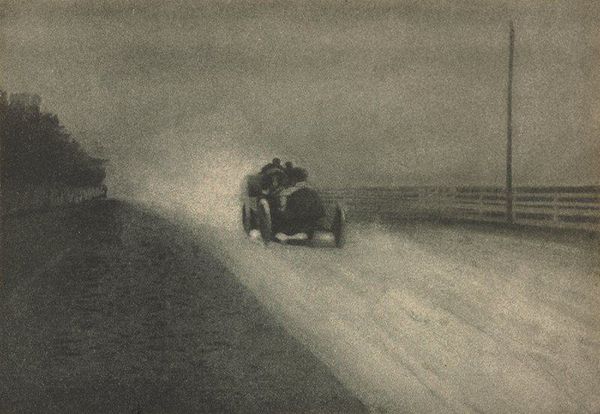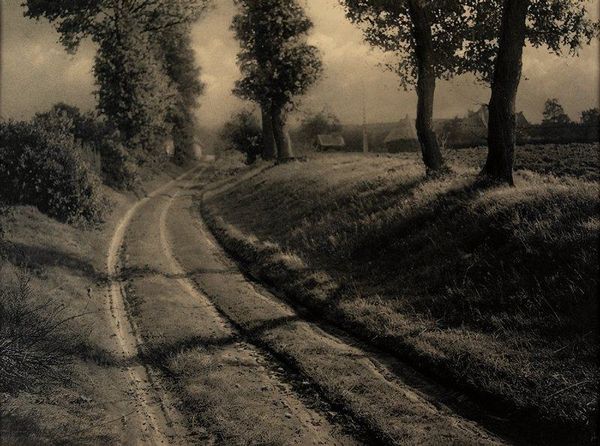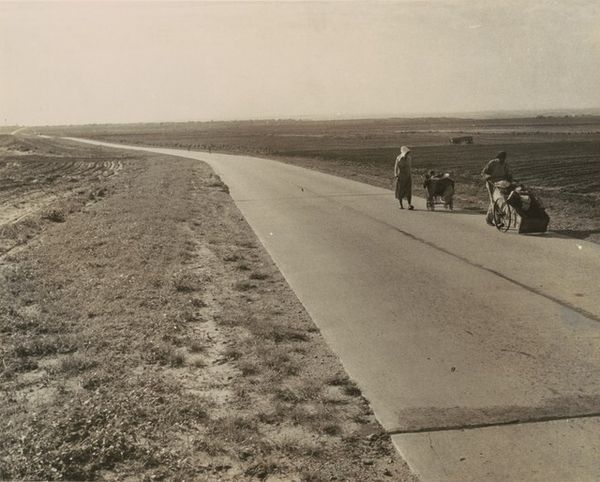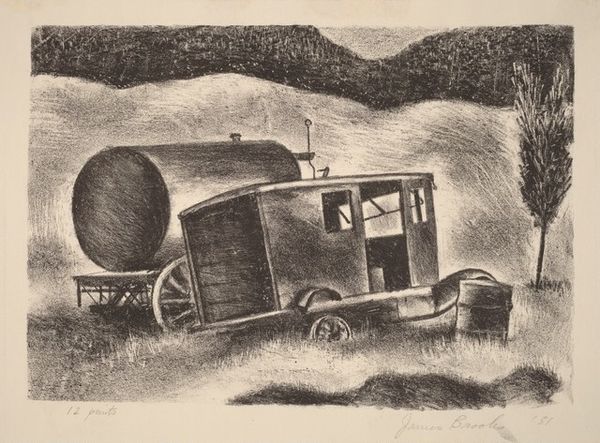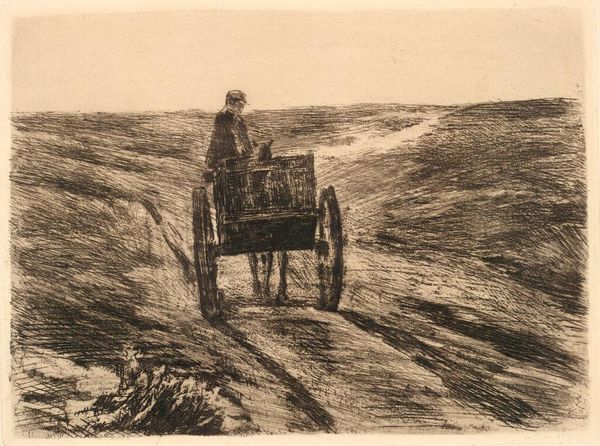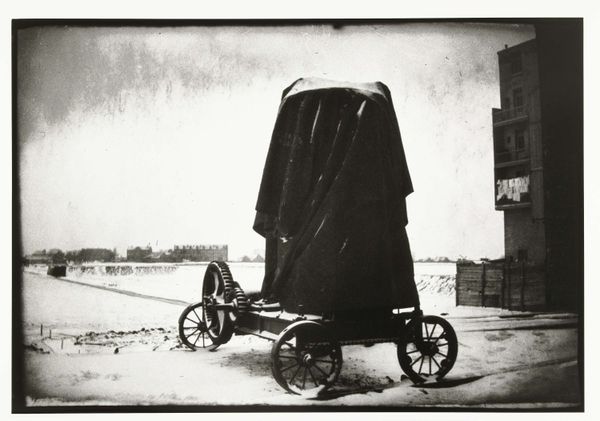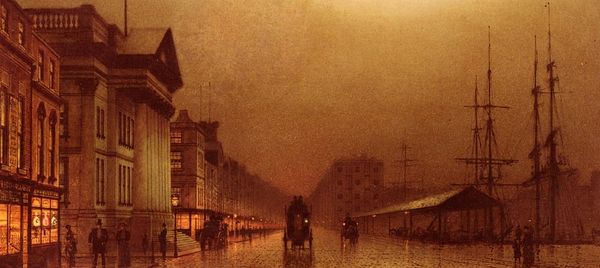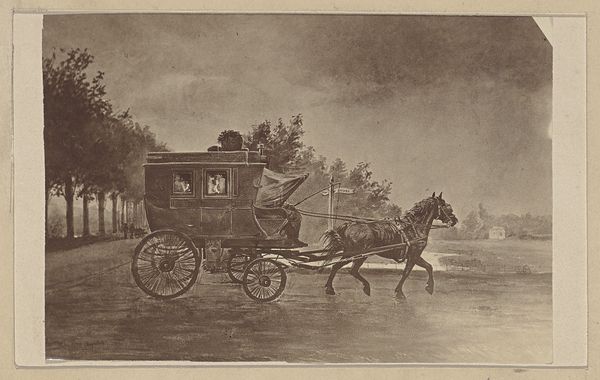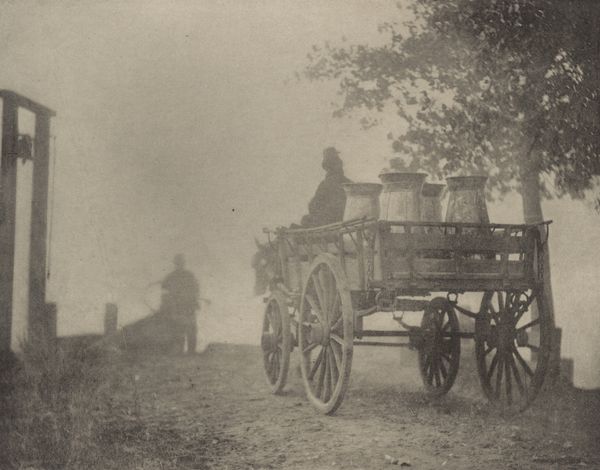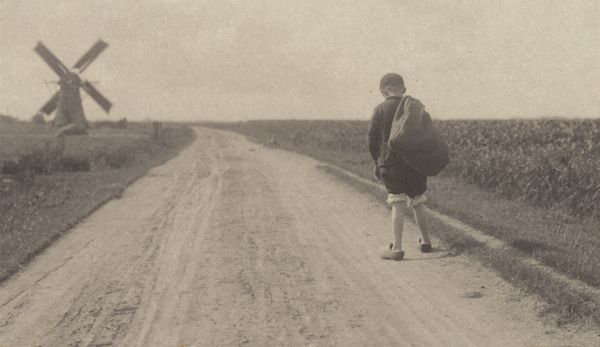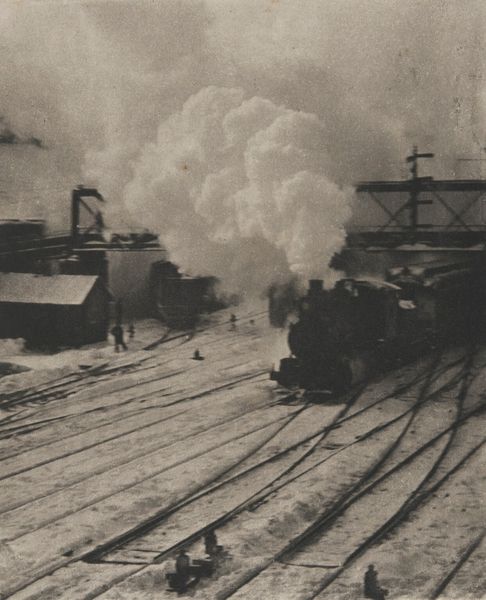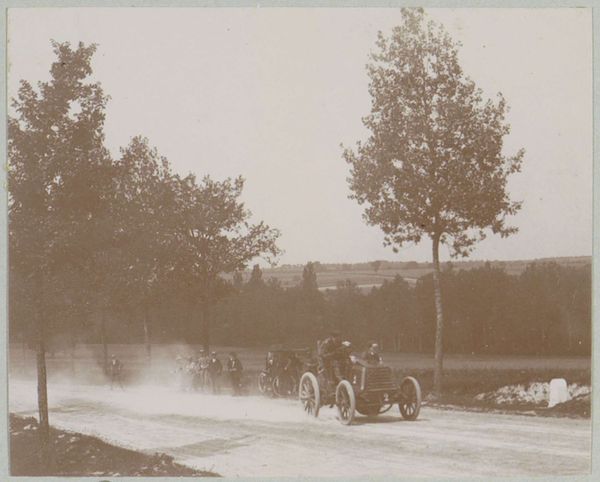
Copyright: Public domain
Editor: Here we have Robert Demachy's 1904 photograph, "Speed." It's a hazy, almost dreamlike image of a car racing down a road, rendered in soft shades of gray. What strikes me most is the way he captures the sensation of movement. What do you see in this piece? Curator: Beyond its aesthetic appeal, “Speed” encapsulates the tumultuous shift of early 20th-century society grappling with modernity. The automobile becomes a potent symbol of technological advancement but also embodies a disruption of traditional power structures. Who benefits from this “speed,” and who is left behind? Editor: That's a great point. I hadn't considered the social implications of this new technology. It's easy to get caught up in the aesthetic. Curator: Demachy was part of the Pictorialist movement, where photographers sought to elevate photography to the status of fine art, often imitating painting. Notice the blurring and the soft focus? He manipulates the photographic process, making the image less about objective documentation and more about subjective experience, especially a specific socioeconomic one. In that light, what does "speed" signify to you now? Editor: I suppose it suggests a changing social landscape, but maybe only accessible to certain people who can afford such means? It’s definitely food for thought, especially considering the ecological impact. Curator: Exactly. By examining it through the lens of cultural theory, "Speed" reveals the complex, sometimes contradictory relationship between progress, power, and perception in an era of unprecedented change. Editor: Thanks. I never thought about pictorialism like that! I have a different appreciation for it. Curator: Absolutely, and I can appreciate a fresh, informed reading!
Comments
No comments
Be the first to comment and join the conversation on the ultimate creative platform.
